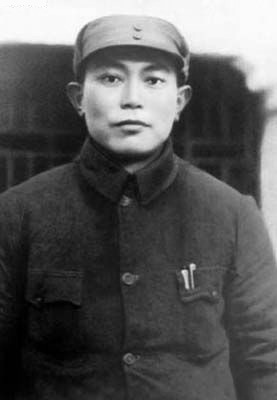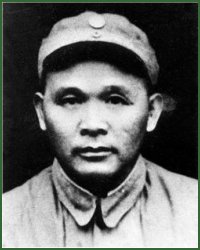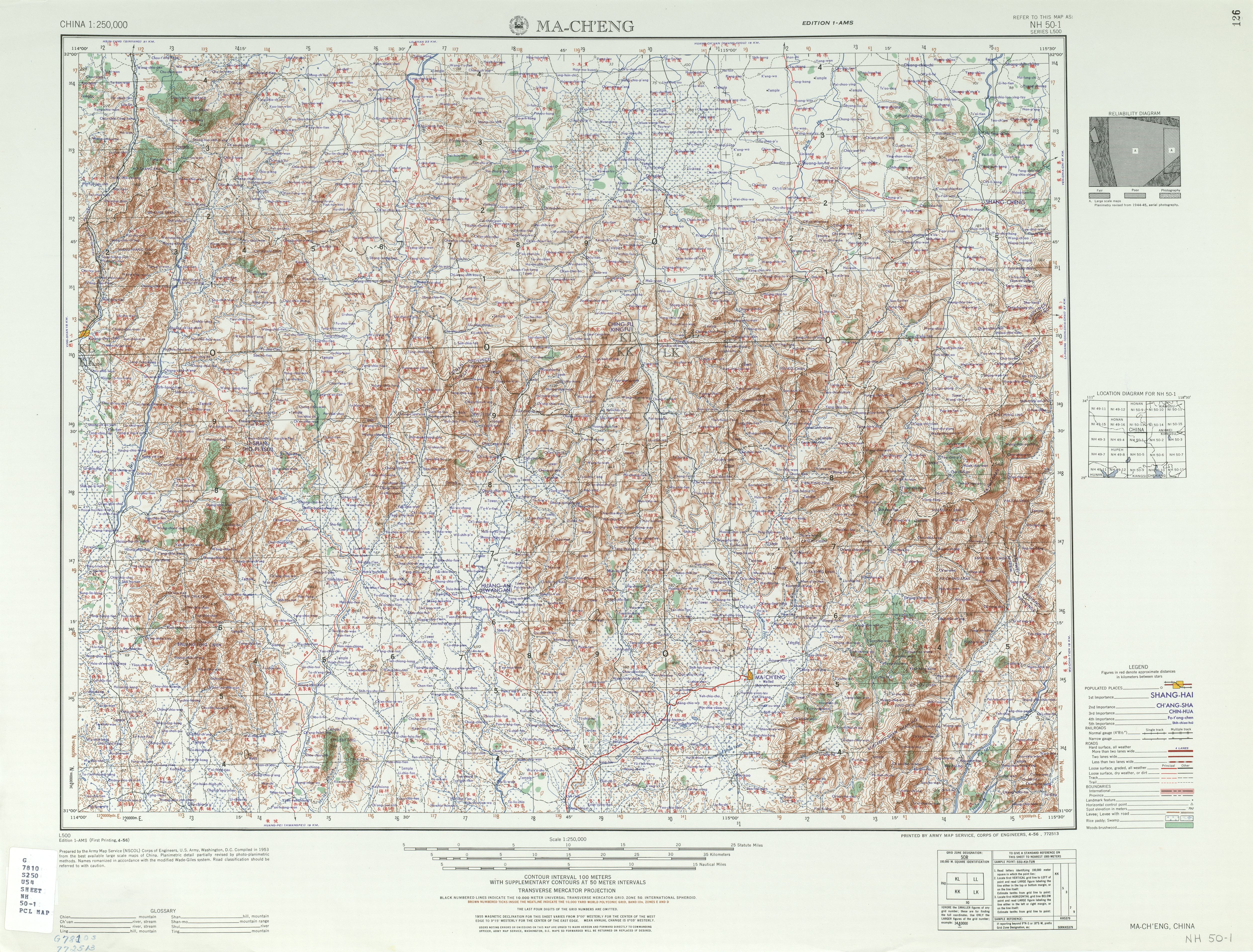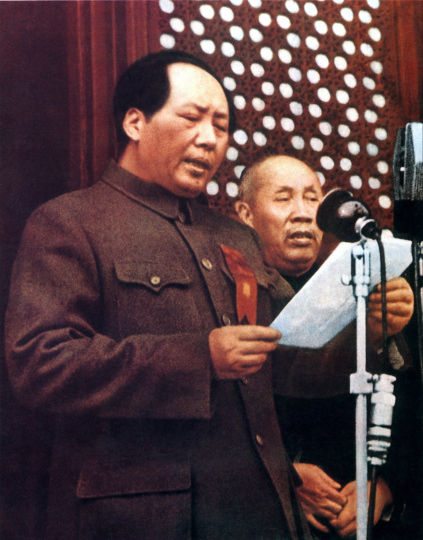|
Hong'an
Hong'an County (), formerly named Huang'an County (; Hwangan), located to the north of provincial capital Wuhan, is a county under jurisdiction of Huanggang, Hubei province, People's Republic of China. Hong'an is famous for being the birthplace of many generals in the People's Liberation Army originally hailed from it. In the early 1950s, there were over 200 generals from Hong'an, far more than any other county in China. It earned Hon'an the nickname "County of the Generals". The former military leader and President of China, Li Xiannian (1909–1992), was born in Hong'an. History In 845 BC, Marquis Wen () Huang Meng () (aka Huang Zhang; ) moved the capital of the State of Huang from Yicheng to Huangchuan (present-day Huangchuan, Henan). Huang Xi's descendants ruled the State of Huang until 648 BC when it was destroyed and conquered by the State of Chu. The Marquis of Huang, Marquis Mu () Huang Qisheng (), fled to the state of Qi. The people of Huang were forced to relocate to C ... [...More Info...] [...Related Items...] OR: [Wikipedia] [Google] [Baidu] |
Huanggang
Huanggang is a prefecture-level city in easternmost Hubei, Hubei Province, China. It is situated to the north of the middle reaches of the Yangtze River and is bounded in the north by the Dabie Mountains and is named after Mount Huanggang, Huanggang, Mount Huanggang. It borders Henan in the north, Anhui in the east and Jiangxi in the south. The city's administrative area covers and the total population was 5,882,719 as of the 2020 census whom 456,862 resided in the Huangzhou urban district, making it the second most populous city in the province by administrative population, after Wuhan, the provincial capital. the Ezhou – Huanggang built-up (or ''metro'') area was home to 1,152,559 inhabitants comprising (Echeng district and Huangzhou district of Huanggang), and many of its residents work in Wuhan. In 2007, the city is named China's top ten livable cities by Chinese Cities Brand Value Report, which was released at the 2007 Beijing Summit of China Cities Forum. History In 84 ... [...More Info...] [...Related Items...] OR: [Wikipedia] [Google] [Baidu] |
Hubei
Hubei is a province of China, province in Central China. It has the List of Chinese provincial-level divisions by GDP, seventh-largest economy among Chinese provinces, the second-largest within Central China, and the third-largest among inland provinces. Its provincial capital at Wuhan serves as a major political, cultural, and economic hub for the region. Hubei is associated with the historical state of E that existed during the Western Zhou dynasty (771 BCE). Its name means 'north of the lake', referring to Dongting Lake. It borders Henan to the north, Anhui and Jiangxi to the east, Hunan to the south, and Chongqing and Shaanxi to the west. The high-profile Three Gorges Dam is located at Yichang in the west of the province. History The Hubei region was home to sophisticated Neolithic cultures. By the Spring and Autumn period (770–476 BC), the territory of today's Hubei formed part of the powerful Chu (state), State of Chu. Chu, nominally a tributary state of the Zh ... [...More Info...] [...Related Items...] OR: [Wikipedia] [Google] [Baidu] |
Li Xiannian
Li Xiannian (; 23 June 1909 – 21 June 1992) was a Chinese Chinese Communist Party, Communist military and political leader, president of China from 1983 to 1988 under paramount leader Deng Xiaoping and then chairman of the Chinese People's Political Consultative Conference from 1988 until his death. He was a full member of the Politburo of the Chinese Communist Party, Politburo from 1956 to 1987, and of its Politburo Standing Committee of the Chinese Communist Party, Standing Committee from 1977 to 1987.''Li Xiannian (1909–1992)'', in Christopher R. Lew, Edwin Pak-wah Leung: ''Historical Dictionary of the Chinese Civil War'', p.p. 120-121, Scarecrow Press, 2013Holley, David"Li Xiannian, Ex-President of China, Dies at 83: Old Guard: He was one of a ruling clique of ‘8 elders’ who ordered the army to repress the pro-democracy movement in 1989".''Los Angeles Times'', 23 June 1992. Li worked as an apprentice carpenter in his teenage years to support his family. He joined the Com ... [...More Info...] [...Related Items...] OR: [Wikipedia] [Google] [Baidu] |
Eyuwan Soviet
The Eyuwan Soviet. The name comes from the Chinese abbreviations of Hubei (), Henan (), and Anhui (). It's also known as the Hubei–Henan–Anhui Soviet or the Eyuwan Revolutionary Base Area ( zh, labels=no, c=鄂豫皖革命根据地第, p=Èyùwǎn gémìng gēnjùdì dì). was a short-lived soviet government established in March 1930 by the Chinese Communist Party in the Dabie Mountains border region between Hubei, Henan, and Anhui provinces. At its height in 1931 and early 1932, the Eyuwan Soviet was the second-largest Chinese Soviet after the Central Soviet in Jiangxi. It improved the rights of women and redistributed land to poor and landless peasants. It was famously led by Zhang Guotao, a rival of Mao Zedong, who attempted to consolidate his control over Eyuwan with a series of purges. The Fourth Nationalist Encirclement Campaign defeated Eyuwan's Fourth Red Army in late 1932 and forced it to retreat westwards towards Sichuan and Shaanxi. The Soviet government ceased to ... [...More Info...] [...Related Items...] OR: [Wikipedia] [Google] [Baidu] |
Counties Of The People's Republic Of China
zh, p=Xiàn, labels=no , alt_name = , map = , caption = , category = Third level administrative division of a unitary state , territory = People's Republic of China , upper_unit = Prefectures, Provinces , start_date = , current_number = 1,319 (1,307 controlled, 11 claimed) , number_date = 2023 , population_range = , area_range = , government = Various, Central Government , subdivision = Town, Township Counties ( zh, s=县, labels=no) are found in the third level of the administrative hierarchy in provinces and autonomous regions and the second level in municipalities and Hainan, a level that is known as "county level" and also contains autonomous counties, county-level cities, banners, autonomous banners and city districts. There are 1,355 counties in mainland China out of a total of 2,851 county-level divisions. The term ''xian'' is sometimes translated as "district" or "prefecture" when put in the context of Chinese history. History ''Xia ... [...More Info...] [...Related Items...] OR: [Wikipedia] [Google] [Baidu] |
Chinese Language
Chinese ( or ) is a group of languages spoken natively by the ethnic Han Chinese majority and List of ethnic groups in China, many minority ethnic groups in China, as well as by various communities of the Chinese diaspora. Approximately 1.39 billion people, or 17% of the global population, speak a variety of Chinese as their first language. Chinese languages form the Sinitic languages, Sinitic branch of the Sino-Tibetan language family. The spoken varieties of Chinese are usually considered by native speakers to be dialects of a single language. However, their lack of mutual intelligibility means they are sometimes considered to be separate languages in a Language family, family. Investigation of the historical relationships among the varieties of Chinese is ongoing. Currently, most classifications posit 7 to 13 main regional groups based on phonetic developments from Middle Chinese, of which the most spoken by far is Mandarin Chinese, Mandarin with 66%, or around 800&nb ... [...More Info...] [...Related Items...] OR: [Wikipedia] [Google] [Baidu] |
Macheng
Macheng () is a city in northeastern Hubei province, People's Republic of China, bordering the provinces of Henan to the north and Anhui to the northeast. It is a county-level city under the administration of Huanggang City and abuts the south side of the Dabie Mountains. The city's administrative area covers about , and includes some 704 villages and small towns. Total population was 893,654 at the 2020 census. History Macheng has a long history, dating back to the Spring and Autumn period as part of the state of Chu, and was the site of the historic Battle of Boju fought between Chu and Wu in 506 BC. It was named Macheng in 598 AD. In 1927, a major peasant revolt erupted in Macheng, creating a strong base for the ensuing Communist revolution in 1949. More than 100,000 people joined Mao's Red Army under local Generals, Wang Shusheng and Chen Zaidao. A guerilla base in Macheng was eliminated in the Campaign to Suppress Bandits in Dabieshan. Macheng played a key role during the ... [...More Info...] [...Related Items...] OR: [Wikipedia] [Google] [Baidu] |
Guangshan County
Guangshan County (; postal: Kwangshan) is a county in the southeast of Henan province, China. It is under the administration of Xinyang city. The regional dialect is the Xinyang city dialect of Southwestern Mandarin. The 13th five-year plan of Xinyang city puts forward the concept of "integration of decoration and light", accelerates the integrated development of Huangchuan and Guangshan counties, constructs the sub central city of the city area, and supports the withdrawal of counties into cities. Administrative divisions , this county is divided to 2 subdistricts, 7 towns and 10 townships. ;Subdistricts * Xianshan Subdistrict () * Zishui Subdistrict () ;Towns ;Townships Climate History The famous historical figures born at Guangshan included Sima Guang (司马光, 1019–1086), Cai Yizhong (蔡毅中, 1567-1631), and Huxu (胡煦, 1655-1736). During the Chinese Civil War, Guangshan county was at the heart of the Eyuwan Soviet The Eyuwan Soviet. The name comes f ... [...More Info...] [...Related Items...] OR: [Wikipedia] [Google] [Baidu] |
Dong Biwu
Dong Biwu ( zh , c=董必武 , p=Dǒng Bìwǔ , w=Tung Pi-wu; 5 March 1886 – 2 April 1975) was a Chinese communist revolutionary and politician, who served as acting Chairman of the People's Republic of China between 1972 and 1975. Early life Dong Biwu was born in Huanggang, Hubei, to a landlord family, and received a classical education. In 1911, he joined the Tongmenghui, and participated in the Wuchang Uprising. He then went to Japan in 1913 to study law at Nihon University. While there, he joined Sun Yat-sen's newly-formed Chinese Revolutionary Party, later to become the Kuomintang. In 1915, he returned to China, organizing resistance against the Yuan Shikai regime in his native Hubei, which landed him in prison for six months. Upon his release, he returned to Japan to complete his law studies. Between 1919 and 1920, he lived in Shanghai, where he was first exposed to Marxism through a group of Communist intellectuals centered around Li Hanjun. Returning to Hubei, he s ... [...More Info...] [...Related Items...] OR: [Wikipedia] [Google] [Baidu] |
China Post
China Post, officially the China Post Group Corporation, is the national postal service corporation of the China, People's Republic of China. It is incorporated as a state-owned enterprise. China Post shares its office with the sub-ministry-level government agency State Post Bureau, which regulates the national postal industry. History The current postal service of China, People's Republic of China was established in 1949. It replaced the Chunghwa Post in mainland China in 1949, as well as in the Universal Postal Union in 1972. It was formerly administered by the Ministry of Posts and Telecommunications. China Post is directly supervised by the State Post Bureau which has overall responsibility for regulating postal service in China. The State Post Bureau is an agency reporting to the Ministry of Information Industry of the People's Republic of China. Organizational structure After the separation from the State Post Bureau and several re-organization, China Post is cu ... [...More Info...] [...Related Items...] OR: [Wikipedia] [Google] [Baidu] |
Town (China)
When referring to Administrative divisions of China#Township level (4th), political divisions of China, town is the standard English translation of the Chinese (traditional: ; zh, p=zhèn , w=chen4). The Constitution of the People's Republic of China classifies towns as fourth-level administrative units, along with, for example, Townships of China, townships ( zh, s=乡 , p=xiāng). A township is typically smaller in population and more remote than a town. Similar to higher-level administrative units, the borders of a town would typically include an urban core (a small town with the population on the order of 10,000 people), as well as a rural area with some Villages of China, villages ( zh, labels=no, s=村 , p=cūn, or zh, labels=no, s=庄 , p=zhuāng). Map representation A typical provincial map would merely show a town as a circle centered at its urban area and labeled with its name, while a more detailed one (e.g., a map of a single county-level division) would also s ... [...More Info...] [...Related Items...] OR: [Wikipedia] [Google] [Baidu] |
Simplified Chinese Character
Simplified Chinese characters are one of two standardized Chinese characters, character sets widely used to write the Chinese language, with the other being traditional characters. Their mass standardization during the 20th century was part of an initiative by the People's Republic of China (PRC) to promote literacy, and their use in ordinary circumstances on the mainland has been encouraged by the Chinese government since the 1950s. They are the official forms used in mainland China, Malaysia, and Singapore, while traditional characters are officially used in Hong Kong, Macau, and Taiwan. Simplification of a component—either a character or a sub-component called a Radical (Chinese characters), radical—usually involves either a reduction in its total number of Chinese character strokes, strokes, or an apparent streamlining of which strokes are chosen in what places—for example, the radical used in the traditional character is simplified to to form the simplified charac ... [...More Info...] [...Related Items...] OR: [Wikipedia] [Google] [Baidu] |








